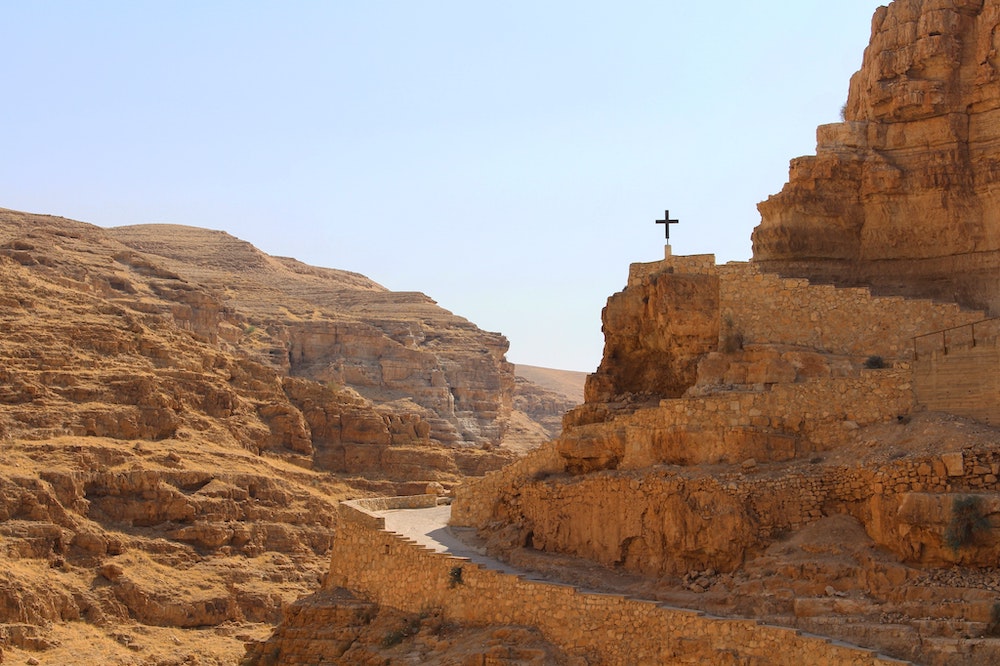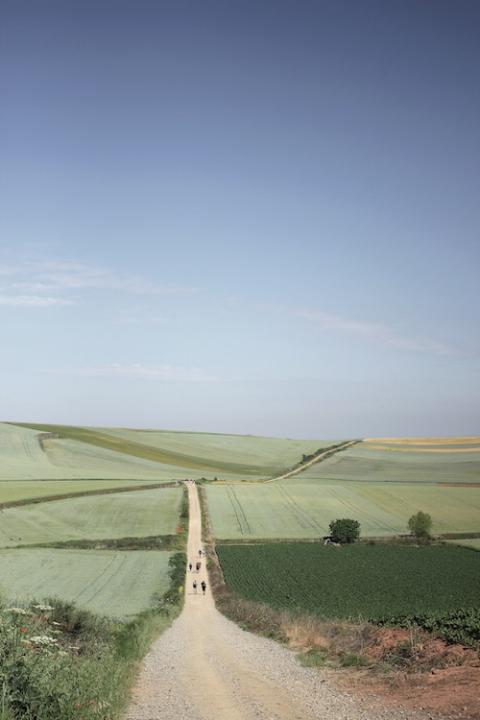
(Unsplash/Iva Rajovic)
This time of pandemic has had its challenges for those who find spiritual insight and inspiration traveling, myself included. I have been isolated from experiencing wider worlds due to the stay-at-home orders. Admittedly, for the many who suffer greatly during this time, my clipped wings do not rank high on the scale of pandemic difficulties.
Nonetheless, I miss wandering and wondering through this world of ours. I have visited more than 30 countries, including nearby Cuba and far away New Zealand. I have walked the mud paths of Soweto in South Africa and have been moved to prayer in Istanbul's Hagia Sophia.
I have driven around the mainland of my own diverse country, visiting the slave auction site in Charleston, South Carolina, enjoying the bucolic elegance of Savannah, Georgia, walking the circumference of Devils Tower in Wyoming, and exploring Boston's Freedom Trail. I have backpacked in Alaska and sat by the ocean's edge in Hawaii, watching whales breach the water.
Surely, I have had the good fortune to explore the world, a privilege many have not had. Even so, I don't consider myself a tourist. Rather, I see myself as a pilgrim.
What's the difference? A tourist sees people and places. A pilgrim seeks to see into people and places. A tourist is satisfied having visited places and checked them off a bucket list. A pilgrim strives to encounter the divine presence through travel. Tourism is often a commercial venture. Pilgrimage is a holy excursion into the natural and cultural Revelation of all creation.
But what progress can a pilgrim make during pandemic times? My own personal challenge has been to embark on pilgrimages without leaving the confines of my own abode.
Advertisement
Each morning, I light a candle, place it in front of a specific object around my home, and then focus on the peoples and cultures represented by that symbol. I enter into the deeper realities these objects represent through thoughtful reflection and meditation.
For me, these armchair pilgrimages bring me closer to people around the world, the possibilities and problems they face, and provide an occasion for me to examine my own life. Ultimately, pilgrimage illuminates the presence of the divine both in other lives and in my own life.
One morning, I lit a candle in front of a picture of a Cuban street scene replete with the legendary colorful classic cars and thought about the people of Cuba and their country's jingoistic motto, Patria o Muerte, Venceremos ("Homeland or death, we shall overcome").
Another day, I found myself lighting a candle before a bumper sticker that reads, "Live Aloha." My pilgrimage took me to Hawaii where its people live close to nature and celebrate human diversity. Ua Mau ke Ea o ka '¯AĀ ina i ka Pono ("The life of the land is perpetuated in righteousness").
Yet another day, I found myself on pilgrimage to the Muslim world, focusing on a watercolor of a muezzin calling the community to prayer from the minaret of a mosque. Muslims pray five times daily; more often than not, I pray only once daily.
A statuette of Our Lady of Sheshan brought me to China, where the mother of Jesus is revered by its Catholic population. Their people, the first to suffer from the ongoing pandemic, now suffer from racist innuendo from my country's top official.
A basket woven by an Australian aboriginal artisan brought me Down Under, where the original inhabitants of that country have been so mistreated. It also brought me back home with a deeper appreciation of the sufferings of our own Native Americans and African Americans. Yes, Black lives do matter.
A chess set brought me to India where the game first developed. I thought about Indians' manifold religious traditions and how their spiritual practices also reveal particular presences of the divine.

Camino de Santiago (Unsplash/Damien Dufour Photographie)
There are advantages to armchair pilgrimages. No bleeding blisters on my feet nor aching arches. No worries about finding a place to bed down for the night. Sipping my morning coffee in the comfort of my own well-worn armchair as I go on pilgrimage within the confines of my own home is, by comparison, a treat.
But there are drawbacks also. Friends who have walked the famed Camino de Santiago tell me that the people they encountered along the way were an integral and inspirational part of their pilgrimage. And the thrill of arriving at Spain's Cathedral of Santiago de Compostela in Galicia, its behemoth censor swinging back and forth with its perfumed aromas pervading the sometimes sweaty and smelly bodies of recently arrived pilgrims, doesn't happen. Maybe I should try burning an incense stick in addition to lighting a candle of hope at the start of each of my in-house pilgrimages!
Many objects scattered round my home — some explicitly sacred, others not — have provided me worthwhile and effective focal points for my in-place pilgrimages. They remind me that God's presence extends well beyond the parochial limitations of church buildings. While sheltering in place, I have been led outward to wider worlds and inward to more fully appreciate God's incredible incarnations.
On pilgrimage!
[Peter Gilmour is professor emeritus of Loyola University Chicago and the author of The Wisdom of Memoir: Reading and Writing Life's Sacred Texts.]
Editor's note: We can send you an email every time Soul Seeing is published so you don't miss it. Sign-up here.








